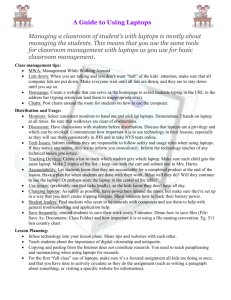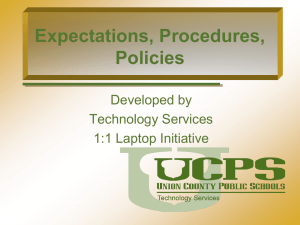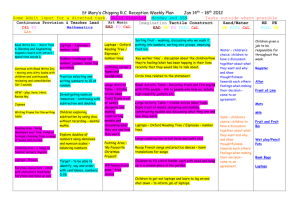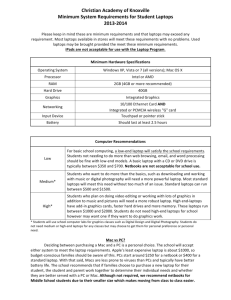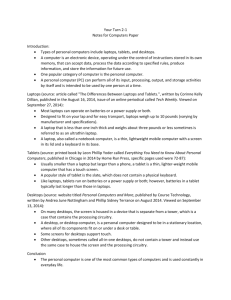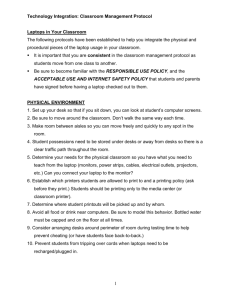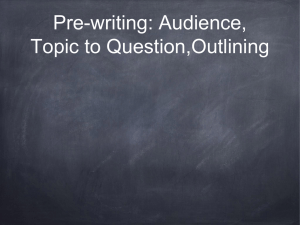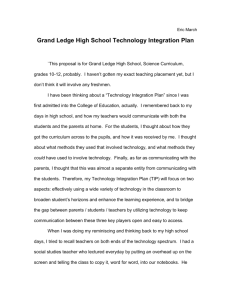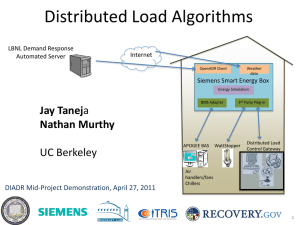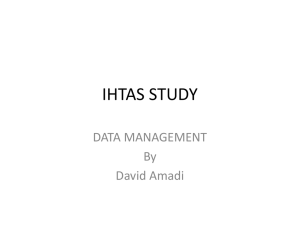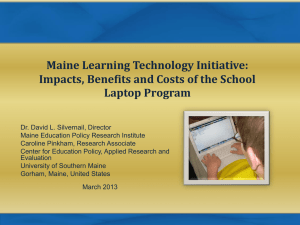Creative Arts - Curriculum Support
advertisement
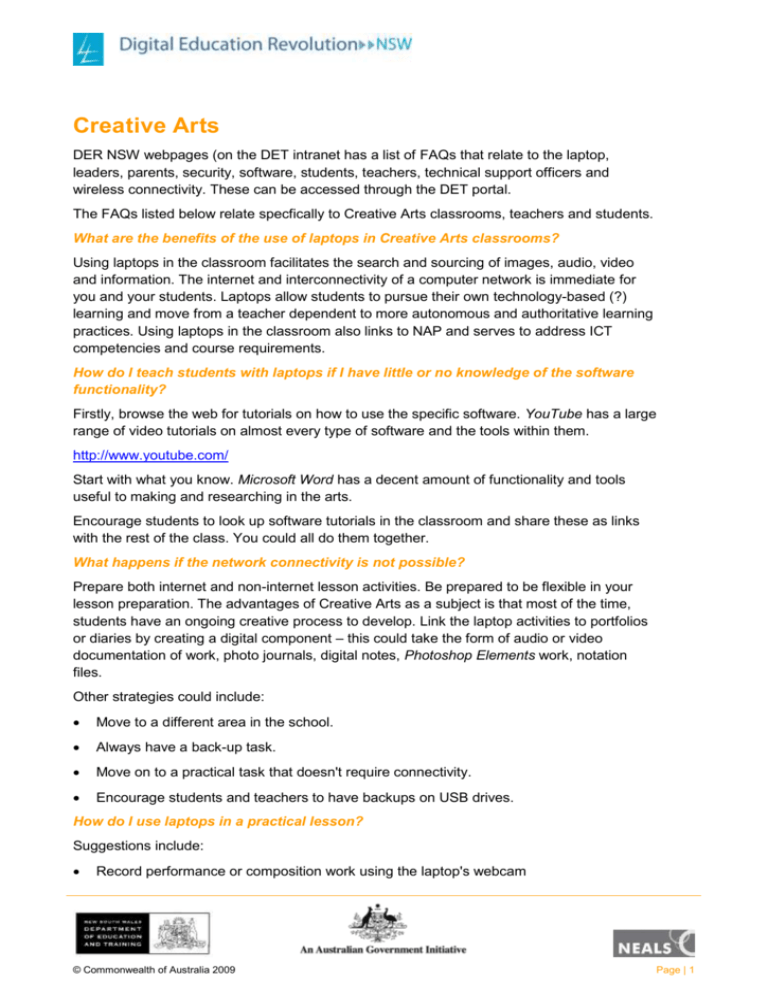
Creative Arts DER NSW webpages (on the DET intranet has a list of FAQs that relate to the laptop, leaders, parents, security, software, students, teachers, technical support officers and wireless connectivity. These can be accessed through the DET portal. The FAQs listed below relate specfically to Creative Arts classrooms, teachers and students. What are the benefits of the use of laptops in Creative Arts classrooms? Using laptops in the classroom facilitates the search and sourcing of images, audio, video and information. The internet and interconnectivity of a computer network is immediate for you and your students. Laptops allow students to pursue their own technology-based (?) learning and move from a teacher dependent to more autonomous and authoritative learning practices. Using laptops in the classroom also links to NAP and serves to address ICT competencies and course requirements. How do I teach students with laptops if I have little or no knowledge of the software functionality? Firstly, browse the web for tutorials on how to use the specific software. YouTube has a large range of video tutorials on almost every type of software and the tools within them. http://www.youtube.com/ Start with what you know. Microsoft Word has a decent amount of functionality and tools useful to making and researching in the arts. Encourage students to look up software tutorials in the classroom and share these as links with the rest of the class. You could all do them together. What happens if the network connectivity is not possible? Prepare both internet and non-internet lesson activities. Be prepared to be flexible in your lesson preparation. The advantages of Creative Arts as a subject is that most of the time, students have an ongoing creative process to develop. Link the laptop activities to portfolios or diaries by creating a digital component – this could take the form of audio or video documentation of work, photo journals, digital notes, Photoshop Elements work, notation files. Other strategies could include: Move to a different area in the school. Always have a back-up task. Move on to a practical task that doesn't require connectivity. Encourage students and teachers to have backups on USB drives. How do I use laptops in a practical lesson? Suggestions include: Record performance or composition work using the laptop's webcam © Commonwealth of Australia 2009 Page | 1 Establish an online forum to discuss and share experiences Web-based research Viewing performances and art works How do I manage the use and non-use of laptops during practical lessons in wet and dry classroom areas or customised settings? Create designated 'dry areas' in your classroom for working. Develop teacher’s directives such as 'Put all laptops away.' 'Get laptops out.' Display safety procedures on posters on the wall of your room. Create them specific to your requirements and learning spaces. Create a designated recording area for creating video journals or audio recordings. How do I ensure the laptops are used in a safe and supportive manner in Creative Arts? Establish a classroom 'code of practice' for appropriate laptop and internet use. Most schools will establish clear policies and practices. How often do I use the laptops in Creative Arts lessons? The laptops should not completely replace all teaching methods, content and strategies. You will still use handout sheets and textbooks. You will still want students to write a range of texts on paper. Creative Arts classrooms will always be studios of 'practice' in the artform. It is up to you to create a balance of both laptop and non-laptop based learning experiences. The website I wish to access is blocked. What do I do? You can check if websites are blocked on the DET Intranet http://filteradmin.det.nsw.edu.au/Anon/UrlReportRequest.aspx You can apply to have them un-blocked through the same site. You can download resources yourself from the website and create PowerPoint presentations prior to the lesson. How do I manage activities such as individual, pair and group work? Students will be able to collaborate using some of the software applications such as Adobe Contribute. Activities could be designed for group work using school blogs and flogs. Tasks could involve a number of components which can be delegated to members of a working group such as investigating and researching a number of artists, performers or composers from one movement of the 20th century. Group activities are a good strategy for overcoming issues of students with flat batteries or laptops left at home. What new classroom management issues do I need to consider for working with laptops? Make sure students know your expectations and guidelines, e.g. Batteries must be charged every night. Explain and model the task first, before students attempt it themselves. © Commonwealth of Australia 2009 Page | 2 Use cues such as 'Lids ajar', 'Arms folded'. Develop clear communication of when the laptops will be used. Make a troubleshoot poster for students to solve their own technical issues where possible. How do I use the laptop's webcam? You need to use specific applications such as Adobe Premiere, Microsoft Moviemaker or OneNote because the webcam does not have a default program. How do I create a still frame image from the webcam? Using Adobe Premiere, you can export a Still Frame image by pausing at the correct point in the timeline. The webcam does not have a default program. Why do files only open as Read-Only file when I email them to students? Students must select the Save as option when opening an attachment (from an email) in order for it to be a modifiable file. If they select Open or Save' it will become a Read-Only file. Why won’t my Premiere files open properly? If Adobe Premiere files have been moved or renamed, the application may not be able to find the associated movie files. You will need to redirect Adobe Premiere to link to the correct avi file. © Commonwealth of Australia 2009 Page | 3
